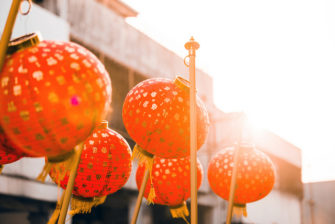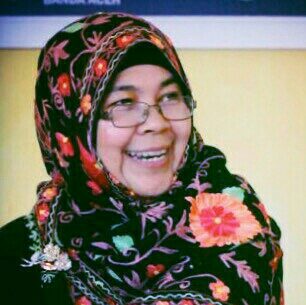
Background
Aceh, with its special autonomy and self government model, has a special right to apply shari’a law. The region has attracted frequent media coverage for various reasons: the armed political conflict, the 2004 earthquake and tsunami disaster, and shari’a law cases, among others. While it is known as the stronghold Muslim community in Indonesia, Aceh as a provincial territory is also home to religious and cultural minorities, such as the Chinese, locally known as “Tionghoa” or “orang Cina.” Banda Aceh, the provincial capital, is an interesting area to observe or learn about the Aceh Chinese community’s cultural and religious dynamics. This short article will discuss the case of the Chinese in Banda Aceh area, with some comparison to another Chinese community in Tamiang, a district located in the provincial border between Aceh and North Sumatra (a province that statistically has quite a significant number of non-Muslims). Through this narrative, the essay will address how political, religious, and economic sources of authority affect the social acceptance and rejection of the Chinese community.
Chinese Community in Banda Aceh.

Chinese migrants have a long history in several regions in Sumatra, including Aceh. They settled in several areas of Aceh, not only in the big city of Banda Aceh, but also in several sub-districts across Aceh. In terms of religion, most of those Chinese are either Buddhist or Christians. In Banda Aceh, they live predominantly around the area called Peunayong, now referred to as the city’s “Chinatown.” Most of them work as traders or business men/women selling groceries, food, and clothing. There are two notable Chinese temples along Peunayong’s main road. Apart from the Peunayong area and its surroundings, some Chinese in Banda Aceh also live in the Goheng area, across a small river near the Teuku Umar main road, and in the Setui business area nearby. One of the Chinese community leaders in Banda Aceh mentioned that historically the Goheng area was a community of Hokkian Chinese migrants. After the tsunami disaster, some of the Chinese community also moved to the Pantee Riek and Neuheun villages into new homes in the “perumahan Budha Tzu Chi” complexes funded by a “Tionghoa” organization for the people affected by the 2004 tsunami.
Authority and Community: Social Acceptance and Resistance
It has been years since shari’a law was formally instated in Aceh in 2002 and since the conflict between the Indonesian government and Aceh independent movement ended with the Helsinki Memorandum of Understanding in 2005. Over the years of armed conflict and its aftermath, the construction of local identity as “Acehnese” (orang Aceh) and Muslim became more dominant. While the Chinese (Buddhist and Christians) and the local people (mostly Muslim) have coexisted relatively peacefully in Banda Aceh since Chinese settlers arrived in the nineteenth century, or even before, in the last 50 years politics and armed conflict have caused many to feel unsafe or flee.
When the armed conflict in Aceh escalated in the late 1970’s, boosted by the establishment in 1976 of the Gerakan Aceh Merdeka (Aceh Independent Movement), some acts of terror caused members of non-local ethnicities like the Chinese and Javanese (though majority Muslim) to leave Aceh. However, many Chinese returned, especially after the signing of the 2005 peace agreement. Earlier in 1965, the PKI (Indonesian Communist Party) resurgence had much the same effect, and many Chinese fled Aceh for security reasons.
Both religious and community leaders as well as state authorities have particular impact on the social acceptance or rejection of, as well as policies that affect, the ‘other’. For example, Chinese Buddhists and Christians practice their cultural and religious observance as minorities. Some of their cultural and religious events, like Chinese New Year (Imlek), are quite well known locally as “uroe raya Cina” (Chinese holiday). When the late Mawardi Nurdin was mayor of Banda Aceh, there was a big public Chinese festival held in the city in 2011. However, this event was discontinued after his death. The acceptance or rejection of a public recognition of this Chinese holiday, in this case, was dependent on the will of state authorities and political leaders. The impact of these leaders is also felt in other ambits, such as with names. The Chinese in Aceh, like other Chinese elsewhere in Indonesia, adopted an Indonesian name apart from their Chinese given and family name. These local names are mostly utilized for special and official purposes. Having an Indonesian name has not always been optional, however; the New Order government of Suharto enforced the taking of local names. The fourth Indonesian president, Abdurrahman Wahid, rescinded this order and additionally allowed the Chinese religion of Confucianism to be officially recognized by the government.
Religious and Social Identity
Most Chinese settlers were Buddhist upon arriving to Aceh. Quite a number of them converted to Christianity around the 1970s. The Chinese now make up a significant portion of the Christian population in Banda Aceh. Some of them are affiliated with the Methodist Church in Kampung Mulia. There are also two Chinese Buddhist temples nearby. The Methodist Church offers primary and secondary education, and most students are Chinese. Meanwhile, there is a Catholic Church near Peunayong, and Catholic Chinese are also part of its congregation.

During Abdurrahman Wahid’s presidency, the Chinese cultural performance of Barongsai (a dragon dance dating from fourth century China) was recognized officially by the government, together with other aspects of Chinese culture, after having been banned for years, especially during the New Order regime. In 2011, the Barongsai was performed at a Peunayong festival and attracted the attention of many Acehnese people and visitors. This Barongsai was at once contested and later prohibited, especially through municipal government policy. More recently, from 2014 until the present, the Barongsai has been performed again. Recognizing the potential for polemic and resistance, the Chinese have tried to avoid further rejection by combining the Barongsai performance with the seudati, a local Acehnese dance. Now when the Barongsai is held, seudati dancers perform around the Barongsai dragon dancer.
Conversion to Islam: Muallaf and Muallaf Organizations
In addition to those who converted to Christianity, a few Chinese also converted to Islam. A village leader (keuchik) from the area near Peunayong noted that three Chinese people from his village had converted to Islam within the last decade. They converted for a number of reasons, include marriage. Mixed marriages between Chinese and locals occur mostly in the second or the third generation, with almost none in the first generation. There is no clear statistical data from formal sources about the number of Chinese who have converted to Islam. One Chinese leader interviewed estimates that around 200 Chinese have converted to Islam in Aceh. Newly converted Chinese are referred as “muallaf,” or more specifically “Cina muallaf.” On the Aceh border with North Sumatra, in areas like Tamiang, there are said to be many more converts to Islam, not only from Chinese community, but also from other ethnicities, such as the Batak (some of whom migrated from across the provincial border to Tamiang). Converts to another religion are often expelled from their extended family. This exclusion normally persists for years, sometimes for two generations. This research has recorded several personal stories of struggle from converts to Islam, and their situation can be quite difficult, socially. On the one hand, these converts were expelled from their family and ethnic groups, but on the other hand, they are not yet fully accepted by their converted religious community.
This situation has led to initiatives by Chinese converts in Banda Aceh like Mr. R, a business man affiliated with the Aceh Independent Movement. He helped found Formula (Forum Muallaf Aceh, or Forum for Aceh Converts) in 2010 and received support from the provincial government. However, the organization split due to internal conflict, and PMAS (Persatuan Muallaf Aceh Sejahtera, or Unity of Converts for a Prosperous Aceh) was founded, led by Ms. F. The branch of PMAS in Tamiang actively advocates for the betterment of muallaf, economically and socially. One of the interesting phenomena observed during interviews with [muallaf] Chinese was the way they affiliated themselves to local identity. For instance, a Chinese [muallaf] leader claimed that she is more native than another Chinese Indonesian: “I am more native than him, he is from Medan, and I am locally from Goheng Banda Aceh” (“…Saya ini lebih asoe lhok (penduduk asli) dari pada…, dia itu Cina Medan, saya keturunan Go Heng. Asli Banda Aceh, saya…”). She was, in essence, arguing that being more ‘local’ as someone who was born in Aceh supported and provided her with particular privilege and status. That is, the status of being closer to “native,” and as such less rejected because of commonalities with the Muslim Acehnese majority.
The process of social co-existence between majority and minority occurs is dynamic, not stable. Several other factors apart from religion or ethnicity also play a part in the process, such as politics, power and economics. Nevertheless, in the overall public space in Aceh with its special case of shari’a law, violent conflict has not re-emerged, nor have there been public conflicts or contestations. This is in line with the findings from the research and development unit of the Ministry of Religious Affairs in which Aceh is categorized as a “passively tolerant and low violence” community with regards to interreligious relations in Indonesia. In the case of Aceh, [contemporary] narratives fed the formation of “local” identity, when the notion of who is/was “local” (which is apparently based on racial/ethnic identity), and who is/was “other” became stronger, especially during and after the Aceh armed conflict (1976-2005). These insider/outsider contestations as usual influence the notion of whose culture is dominant and whose is lesser.
Some references:
Suryadinata, Leo, Ethnic Chinese in Contemporary Indonesia, Singapore: ISEAS, 2008
Syafi’eh, “Terang Lampion di Serambi Mekkah: Relasi-Muslim Tionghoa di Aceh Timur in Noviandi dan Muhammad Alkaf”, Pembentukan Kesalehan dan Artikulasi Islam di Aceh, Langsa: Zawiyah Serambi Ilmu Pengetahuan, 2015.
Usman, Rani, Etnis Cina Perantauan di Aceh, Jakarta: Yayasan Obor, 2009.
“Cerita warga etnis Tionghoa tinggal di negeri Syariah”, Harian Merdeka online (www.m.merdeka.com), retrieved on 14 March, 2016.

